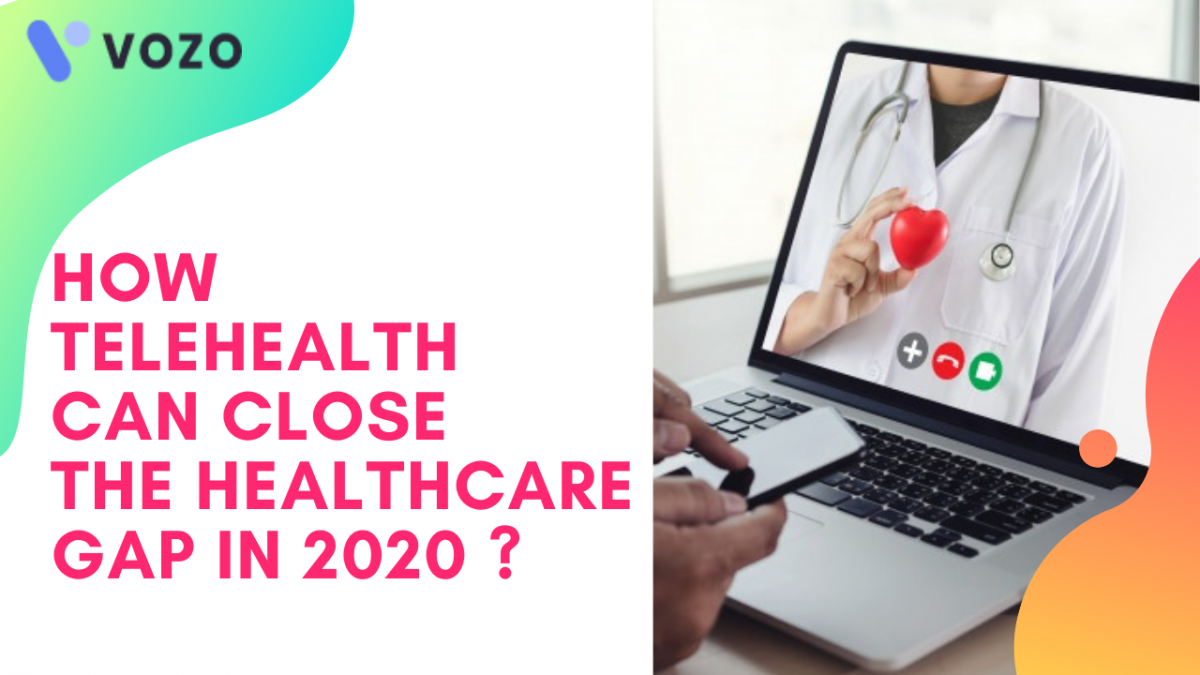How Telehealth Can Close The Healthcare Gap in 2020 ?
The Covid-19 pandemic speaks to the biggest worldwide medical crisis in present-day times – setting a huge strain on effectively over-extended health services. So telehealth is being increasingly seen as a vital part of guaranteeing that patients continue to receive the right medical attention during the Pandemic and beyond.
Recent studies have shown that telehealth improves health outcomes in a better way and the patients who are treated earlier are often have less costly treatments promptly. Here is how telehealth is closing the healthcare gap in 2020.
Telehealth Vs Telemedicine
The term telehealth incorporates an expansive scope of technologies and services to improve healthcare delivery and patient care. Telehealth differs from telemedicine because it refers to a more extensive extent of remote healthcare services when compared to telemedicine. Telehealth can refer to remote non-clinical services, such as provider training, administrative meetings, and continuing medical education, in addition to clinical services. While telemedicine refers specifically to remote clinical services.
What Does Telehealth Contribute to Healthcare?
One of the biggest challenges the healthcare industry is confronting now is the dearth of doctors. Indeed, even in the United States where the structure of the medical care industry is hearty, this absence of healthcare providers is around the world. The equivalent is the situation with Europe and its developed areas. The emergency gets amplified in the Asia Pacific area inferable from its massive population and less physical accessibility. So telehealth can be a great solution during the time of COVID 19 which serves patients with better care and train the doctors as well.
How Telehealth Bridges The Healthcare Gap:
Telemedicine can help us overcome the barriers to accessing healthcare services – the distance between provider and patient, access to transportation, fragmented care caused due to gaps in appointments, and lack of healthcare access and the other benefits of telehealth are as follows:
Improved Quality Of Care
It can improve the quality of medical care for patients with both physical and mental health problems. It can help bring down the rate of hospital admissions and re-admissions. Patients are also more likely to spend less time in the hospital, and stay more actively engaged in their healthcare.
Lowers Healthcare Costs
Telehealth can improve the efficiency of healthcare delivery, reduce the expenses involved in caring for patients or transporting them to a different location, and even help keep patients out of the hospital via regular monitoring and timely interventions. In most cases, it is cheaper than inpatient care.
Telehealth Increases Access To Care Delivery
Distance and travel time between patients and care providers can limit access to care. Fortunately, telemedicine can overcome geographic barriers to healthcare, especially for specialized providers. Telemedicine can be particularly beneficial for patients in medically underserved communities and those in rural geographical locations where clinician shortages exist.
Telehealth Improves Patient Engagement And Satisfaction
Telemedicine makes it easier and more convenient for patients to stay healthy and engaged in their health care. Patients love the convenience, flexibility, and real-time care with their providers.
Vozo Telehealth Solutions For Your Practice
VOZO Telehealth Solutions are the smart choice for delivering care remotely. You can schedule and conduct virtual visits directly from your EHR without any additional software. With 24/7 patient self-scheduling, your practice can expect a reduction in no-shows and instant revenue growth.
About the author

With more than 4 years of experience in the dynamic healthcare technology landscape, Sid specializes in crafting compelling content on topics including EHR/EMR, patient portals, healthcare automation, remote patient monitoring, and health information exchange. His expertise lies in translating cutting-edge innovations and intricate topics into engaging narratives that resonate with diverse audiences.













